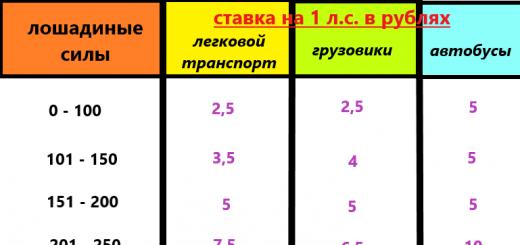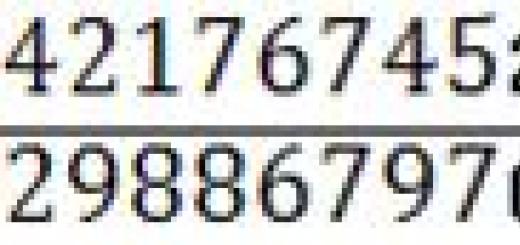Monopoly (from the Greek μονο - one and πωλέω - I sell) -
it is a large capitalist enterprise,
controlling the production and marketing of one or
several types of products. This is such a structure, with
which there is no competition in the market and
one firm is functioning. She produces unique,
unparalleled product and protected from entry
to the market of new firms.
The main features of a monopoly:
One company is the manufacturer of this product andsole service provider;
The monopoly product is unique in the sense that it does not exist
good or close substitutes from the buyer's point of view,
which means that there are no viable alternatives;
The pure monopolist dictates the price and exercises over it
substantial control;
If the monopolist is going to continue to exist,
then he will by all means block entry into
branch of new firms.
Reasons for the emergence of monopolies
The desire to receive monopolistic profit is profithigher than the average possible as a result of the fact that the consumer
has no alternative;
A high proportion of fixed costs that require
one-time large investments in creating a business and in the case of
the emergence of competition does not pay off;
Legal barriers to the implementation of activities;
(licensing, certification)
Foreign economic policy. It aims to protect the market
from foreign competition in order to support domestic
subjects.
Acquisitions and mergers of firms.
Types of monopolies
Natural monopoly (railway, systemswater supply) - enterprises united by a single marketing
organization; the state of the commodity market in which
meeting demand in this market is more efficient in the absence of
competition due to the technological features of production.
State (closed) monopoly - a monopoly created by
force of legislative barriers defining commodity
boundaries of a monopoly market, a subject of a monopoly, forms
control and regulation of its activities, as well as the competence
supervisory authority.
Open monopoly is a temporary situation that exists in
as a result of the emergence of a new technology or product during the period,
until competitors have mastered this technology and production
of this product.
Forms of monopolistic associations
The need for antimonopoly policy
Due to the high level of concentration of economic resources,monopolies create opportunities to accelerate technical
progress. However, these possibilities are realized in cases where
such acceleration contributes to the extraction of monopoly high
profits. Large firms with significant power are
desirable phenomenon in the economy, since engaging in
research, they provide benefits to themselves and to society in
the whole. But there is compelling evidence that monopolies are playing
especially important in accelerating technological progress, no.
Antimonopoly policy is one of the directions of the state
regulation of the economy, representing a complex of state
measures against monopolization of production and the market and
ensuring the development of competition among producers. The state does not seek to make all markets perfectly
competitive, while trying to address serious market weaknesses.
It creates an environment where competition is encouraged, not monopoly,
where the first behavior is more profitable than the second. In this way,
antitrust policy is a tool
administrative regulation of the economy, with the aim
preventing economic imbalances or
socially undesirable changes, its highlights
are:
protection and promotion of competition;
control over dominant firms
on the market;
price control;
protecting the interests and promoting the development of small and medium
business. The main goal of a monopolist is to obtain
maximum profit. For this, the company operates
solely in their own interests, therefore
government regulation of monopolies is one
of the main factors ensuring normal
functioning of the economy. Undoubtedly, in some
cases the existence of monopolies is justified
and necessary, but over these processes should
establish control to prevent
abuse of monopoly position.
Monopoly is a serious problem
market economy and requires immediate
control by the state. Relying on
existing laws and adopting new ones, really
effective laws to restrict
monopoly power and preventing the creation of new
monopoly entities, carrying out effective
antimonopoly policy, a solution to this
Problems.
Slide presentation
Slide text: Monopoly in market economy Economics lesson Iskandarov I.R.

Slide text: Monopoly (from the Greek. Mono - one, poleo - seller) - the exclusive right to carry out any kind of activity (production, trade, fishing, etc.), granted to one person, a certain group of persons or the state.

Slide text: Monopoly presupposes the fulfillment of the following conditions: The monopolist is the only manufacturer of the given product; The products are unique and have no close substitutes; Penetration into the industry for other firms is closed by a number of barriers; The degree of influence of the monopolist on the market price is very high.

Slide text: Barriers to market entry with a monopoly: exclusive rights obtained from government or local authorities; patents and copyrights; ownership of resources, such as sources of raw materials; advantage of low costs of large-scale production.

Slide text: Advantages of low costs of large-scale production: ATC Q ATCk ATCm ATCk - average costs of a competitive firm ATCm - average cost of production of a monopolist firm 1 / 2Q Qm

Slide text: Types of monopolies: Closed Open Natural Artificial

Slide text: A closed monopoly is protected from competition by legal restrictions and prohibitions (most often it is a state monopoly). Open monopoly is a monopoly in which one firm, at least for some time, becomes the only supplier of a product, but does not have special protection from competition. Natural monopoly arises in an industry in which long-run average costs are at their minimum only when one firm serves the entire market. An artificial monopoly is an association of enterprises created for the sake of obtaining super-profits and establishing market power.

Slide text: Features of the interaction of supply and demand in a monopoly market A monopolist has a certain power over the market, since he alone determines the supply of goods. In addition, he has power over the price of the goods, but this power is not absolute, since the price depends on demand, and supply depends on the price.

Slide text: To measure monopoly power, the Lerner coefficient is used: L = (P-MC) / P, where L is the Lerner coefficient; P is the price; MC is marginal cost.
Slide number 10

Slide text: Determining how high the price of a monopolist can be related to demand and its elasticity. Prices can be raised if the corresponding reduction in demand does not entail a fall in the income and profits of the monopoly. Otherwise, the monopoly is forced to increase production in order to increase income, which implies a certain decrease in price in accordance with the law of supply and demand. Q P D1 D2 P1 P2 Q1 Q2 Q3 Q4
Slide number 11

Slide text: Monopoly searches for prices following the same rule as enterprises operating in a perfect market: 1. The volume of production and the corresponding supply of goods should be such that marginal costs (MC) are equal to marginal revenue (MR): MC = MR 2. The monopolist considers MC and MR as a basis for setting prices - it should not be lower than them. However, at a monopoly enterprise, unlike enterprises operating in perfect competition, the marginal income is less than the price (P) and, accordingly, the average revenue (AR): MR< P = AR
Slide number 12

Slide text: Monopoly pricing rule: P = AR> MC = MR
Slide number 13

Slide text: Features of the interaction of supply and demand in the monopoly market Q P MR MC (= S) D Q opt Rm ATC Pe E ATCm Qe Monopoly profit
Slide number 14

Slide text: Task 1. Fixed costs of the monopoly are equal to 1,500 rubles. The dependence of the variable costs of the monopoly on the volume of output is presented in the table: There is data on the volume of demand for the output of the monopoly at different price levels: Determine: What volume of production the monopoly will choose and the corresponding price level; The profit of the monopoly. R, rub. 5000 3500 3100 2800 2600 2380 2100 Qd, pcs. 0 1 2 3 4 5 6
Slide number 15

Slide text: Solution: Monopoly, determining the optimal volume of production, is guided by the rule: MR = MC To solve the problem, you need to find MR, MC and ATC. TC = FC + VC; MS = (TCn-TCn-1) / (Qn-Qn-1); ATC = TC / Q; MR = (TRn-TRn-1) / (Qn -Qn-1); TR = P * Qd.
Slide number 16

Slide text: We will summarize the obtained data in a table: Q, pcs. FС, rub. VC, rub. TS, rub. ATC, rub. MS, rub. R, rub. Qd, pcs. TR, rub. MR, rub. 0 1 2 3 4 5 6 1500 1500 1500 1500 1500 1500 1500 0 1000 1500 2500 4500 7000 10000 1500 2500 3000 4000 6000 8500 11500 - 2500 1500 1333 1500 1700 1916 - 1000 500 1000 2000 2500 3000 5000 3500 3100 2800 2600 2380 2100 0 1 2 3 4 5 6 0 3500 6200 8400 10400 11900 12600 - 3500 2700 2200 2000 1500 700
Slide number 17

Slide text: From the data in the table it follows that the equality MR = MC is achieved at Q = 4. The price level corresponding to the given volume is found from the demand scale: Р = 2600. The profit of the monopoly is found as the difference between TR and TS: 10400-6000 = 4400 rubles. Answer: the monopoly will choose the volume of production equal to 4, the corresponding price level = 2600, the profit of the monopoly = 4400.
Slide number 18

Slide text: Graphic solution to the problem: 1 2 3 4 5 6 0 Q 1000 1500 2000 2500 3000 MR MC D 2600 ATC A
Slide number 19

Slide text: Problem 2. A profit-maximizing firm is a monopolist in the domestic market, where the demand for its products is set by the function: Qd = 90-2.5Р. On the foreign market, it can sell any number of products at a fixed world price. The function of the total costs of the firm has the form: TS = Q² + 10Q + 50. Determine the price of the external market if it is known that in the internal market the firm sold ¾ of the output.
Slide number 20

Slide text: Solution: Let m be the price of the world market for the monopolist's products; The firm will sell products on the domestic market as long as its MR inside. will not equal the MR of the foreign market, i.e. m. That. the volume of production and sales in the domestic market is determined by equality: MR int. = m After that, the monopolist's equilibrium is determined by the condition: MC = m (similar to the condition of a market with perfect competition). the total volume of production and sales is determined from the equality: MS = m
Slide number 21

Slide text: In the domestic market, the volume of production (q) will be: Qd = 90-2.5p Pd = 36-0.4q MR = TR ׳ = (Pd * q) ׳ = (36 q-0.4q²) ׳ = 36- 0.8q MR = m 36-0.8q = mq = 1.25 (36-m) Total production (Q): MC = TS ׳ = (Q² + 10Q + 50) ׳ = 2Q +10 MC = m 2Q + 10 = m Q = (m-10) / 2 From the condition that q = 3 / 4Q, we find: 1.25 (36-m) = 3/4 (m-10) / 2 m = 30 Answer: price foreign market = 30.
Monopoly. Antimonopoly activities of the state Key issues: 1. The essence and types of monopoly. 2. Types and forms of monopolies. 3. Conditions of equilibrium of the monopolist firm. 4. Monopoly price and monopoly profit. 5. Indicators of market concentration. 6. Sources of monopoly power. 7. Economic consequences of monopoly. 8. Antimonopoly regulation. one
A pure monopoly is a type of market structure in which there is only one producer on the market for a given product with the exclusive right to produce and sell it. is special in its kind and does not have close, related substitutes The monopoly firm is able to independently, within certain limits, change the price of the sold goods in any direction Monopoly is completely closed for new firms to enter the industry Lack of free access to obtain economic information 2

Monopoly is the exclusive right to carry out any kind of activity, granted only to a certain person, group of persons, or the state. Types of monopolies closed, protected from competition by means of legal prohibitions and restrictions open, in which one company, due to a coincidence of circumstances, became the only manufacturer and supplier natural goods, necessary due to the fact that without such a monopoly it is impossible to achieve efficient use of resources 3

Monopoly means the exclusive right of someone to something Types of monopolies Monopoly itself - the presence of a sole producer-seller in a particular market oligopoly is a market of a small number of producers-sellers, as a rule, a homogeneous product monopsony - is a market of a sole buyer - a consumer of a particular product bilateral monopoly - the market of a sole seller and a sole buyer 4

Forms of monopolies 1) monopolies associated exclusively with the process of concentration of production 2) technological oligopolies - large enterprises (associations), where the technology itself requires a sufficiently high level of concentration of production 3) monopolies based on product differentiation 4) monopolies associated with leadership in scientific research technical progress (STP) 5) a vast zone of state natural monopoly 6) total (universal) domination of the command-administrative system and almost complete stateization of the economic life of society 5

Types of monopolies Depending on the organizational design, they are distinguished: a pool (from the English pool - literally a common boiler) is a monopoly in which the profit of all participants goes to the general fund and then is distributed among them according to a predetermined proportion of the pool (from the English pool - a common cauldron) is a monopoly in which the profit of all participants goes to a common fund and then is distributed among them according to a predetermined proportion of the corner either goods or shares for the purpose of subsequent speculative resale Corner (from English to corner - literally drive into a corner) is the simplest form of association of entrepreneurs for the purchase of any product or shares for the purpose of subsequent speculative resale ring (from English ring) - short-term an agreement of entrepreneurs with the aim of making a profit by buying up any product on the market and then reselling it at an increased the price of the ring (from the English. ring) - a short-term agreement of entrepreneurs, with the aim of making a profit by buying up any product on the market and then reselling it at higher prices; (profit, price level, etc.) convention (from Lat. conventio - contract, agreement) - an agreement between entrepreneurs, usually of the same industry, on some special issue (profit, price level, etc.) 6

Types of monopolies (continued) cartel (from the French cartel) - an association of entrepreneurs, whose members agree on the size of production, sales markets, terms of sale, prices, payment terms, etc., while maintaining the production and commercial independence of the cartel (from FR itself the implementation of all commercial activities (price determination, product sales) while maintaining the production and legal independence of the enterprises included in it, a syndicate is a type of monopoly, an association of entrepreneurs that undertakes the implementation of all commercial activities (price determination, product sales) while maintaining production and legal autonomy included x in it enterprises trust (from the English. trust) - an association of entrepreneurs, characterized by the fact that the enterprises included in it completely lose their production, commercial and legal independence and are subject to a single management trust (from the English trust) - an association of entrepreneurs, characterized by the fact that the enterprises included in it completely lose their production , commercial and legal independence and are subject to a single management 7

Types of monopolies (continued) concern (from the eng financial control and the leadership of the group of the largest entrepreneurs dominating in the association - the concern (from the English concern) is an association of many industrial, financial and commercial enterprises (various, but interrelated industries, transport, service and financial sectors), formally retaining independence, but in fact subordinate to financial control and the leadership of the dominant group of the largest entrepreneurs in the association, the conglomerate (from the Latin conglomeratus - collected, accumulated) is a type of monopoly that unites enterprises belonging to various sectors of the economy and not associated with direct production cooperation (this type of monopolies is also called a diversified concern) conglomerate (from lat.conglomeratus - collected, accumulated) - a type of monopoly that unites enterprises belonging to various sectors of the economy and not connected with direct production cooperation (this type of monopoly is also called a diversified concern) consortium (from lat.con sortium - complicity, partnership) - a monopoly, a temporary agreement between several banks or industrial enterprises for the joint placement of loans, financial or commercial transactions large-scale, large-scale industrial construction consortium (from the Latin consortium - complicity, partnership) - a monopoly, a temporary agreement between several banks or industrial enterprises for joint placement of loans, conducting financial or commercial operations on a large scale, carrying out large-scale industrial construction of a plant (from lat combinare - to combine, to combine) - an amalgamation of industrial enterprises of different, but technologically interconnected production branches, in which the products of one enterprise serve as raw materials, semi-finished products or auxiliary materials for another plant (from the Latin combinare - to combine, combine) - an amalgamation of industrial enterprises different, but technologically interconnected manufacturing industries, in which the products of one enterprise serve as raw materials, semi-finished products or auxiliary materials for another 8

The equilibrium of the monopolist firm The volume of production Q m is such that the curve of marginal income МR intersects with the curve of marginal costs MC, and the price of the monopolist will be the price P m corresponding to this volume Then the conditions for maximum profit under monopoly conditions: MR = MC

Conclusions from the equilibrium conditions of the monopolist the monopolist does not set the maximum possible price that he would like to get the monopolist avoids the inelastic segment of the demand curve when choosing a decision on the volume of sales and price, the degree of monopoly influence of the firm is determined using the Lerner index, the degree of monopoly influence of the firm is determined using the Lerner index L (Lerner index) at equilibrium of the firm, the marginal cost is less than the price of the MC

Monopoly price - a price that steadily deviates from its possible level in a competitive market and is set by the dominant economic entity or colluding enterprises in order to realize their economic interests through the abuse of monopoly power; (or) compensation for unreasonable costs by infringing on the economic interests of other enterprises or citizens, a monopoly low price is considered, which, in the presence of stable demand, due to a deliberate decrease in income (profit) in the short term, makes it difficult for other enterprises to enter the market and, thereby, restricts competition in the market a certain commodity Types of monopoly prices A monopsony low price is a price set by an enterprise dominating the market for a certain commodity as a buyer in order to obtain excess profits and (or) compensation for unreasonable costs at the expense of maker 11

Monopoly profit is a profit above the average, received by monopoly companies as a result of their special position in the market profit Methods for obtaining superprofits by monopolies Maintaining monopoly high prices Maintaining monopoly high prices Reduction of production in order to reduce production costs Reduction of production in order to reduce production costs Creation of a total deficit in society Creation in a society of total scarcity direct destruction of a part of manufactured products direct destruction of a part of manufactured products standardization and unification of products standardization and unification of products 12

Concentration the degree of predominance of one or more independent economic entities in the production system of interchangeable goods supplied to one geographic commodity market The concentration index CR k is determined as the sum of the market shares of the largest sellers of the market: kk CR k = yik N, CR k = yik N, I = 1 I = 1 where: CR k concentration index N number of firms in the industry N number of firms in the industry yi = qi / Q share of production (sales) i-th firm in the total output (sales) of the industry yi = qi / Q the share of production (sales) of the i-th firm in the total output (sales) of the industry, the market is considered non-concentrated when the index values for 3 firms CR 3 are below 45%, the market is considered non-concentrated when the index values for 3 companies CR 3 below 45% moderately concentrated at CR 3 = 45-70% moderately concentrated at CR 3 = 45-70% highly concentrated at CR 3> 70% highly concentrated at CR 3> 70% 13 70% highly concentrated at CR 3> 70% 13 "> 
Measuring the level of concentration The Herfindahl-Hirschman Index HHI is defined as the sum of the squares of the shares of all firms operating in the market: The Herfindahl-Hirschman Index HHI is defined as the sum of the squares of the shares of all firms operating in the market: N HHI = yi 2 I = 1 I = 1 where: HHI Herfindahl-Hirschman index; y i = q i / Q the share of production (sales) of the i-th firm in the total output (sales) of the industry; y i = q i / Q the share of production (sales) of the i-th firm in the total output (sales) of the industry; N is the number of firms in the industry. N is the number of firms in the industry. The y i values can be expressed in fractions or percentages: 0 
Determination of the concentration level by two indicators Indicator Concentration low-medium high Concentration index CR k less than 45% 45% 70% 70% 100% Herfindahl-Hirschman index HHI less

Monopoly power lies in the ability to set the price above marginal cost, and the amount by which the price exceeds marginal cost is inversely proportional to the elasticity of demand for the firm The less elastic the demand for the firm, the more monopoly power the firm has Factors that determine the elasticity of demand for the firm: elasticity of the market demand (the firm's own demand will be at least as elastic as market demand) the number of firms in the market (if there are many firms in the market, then it is unlikely that one of them can affect the price) interaction between firms (even if there are only 2 or 3 firms on the market, none of them will be able to increase the price many times if the rivalry between them is aggressive, when each firm is trying to capture the lion's share of the market) 16


Economic consequences of monopoly Benefits from the point of view of scientific and technical progress confidence that economic profits will persist for a long time and investments in R&D will give long-term returns Obtaining monopoly profits at the expense of higher prices is an incentive for innovation monopoly helps to reduce costs and realize economies of scale monopoly stimulates competition Availability sufficient financial resources for investment in scientific and technical progress 18

The antimonopoly activity of the state is a continuous, purposeful work of the relevant state structures not so much to limit the monopolistic exploitation of markets, but to eliminate the economic and other conditions that give rise to certain monopolies. better conditions for the operation of the market mechanism, increasing the overall competitive tone of the entire economy 19

Antimonopoly policy of the state is its activity, aimed, firstly, at limiting the influence on economic processes existing monopolies, in 2, to prevent the emergence of new monopolies in the country's economy Content: a ban on limiting the independence of enterprises and entrepreneurs in the production and sale of goods and services; a ban on limiting the independence of enterprises and entrepreneurs in the production and sale of goods and services; a ban on establishment of exceptional conditions for the activities of individual economic entities a ban on the establishment of exceptional conditions for the activities of individual economic entities abolition of monopolistic agreements abolition of monopolistic agreements a ban for competing firms to negotiate prices prohibiting competing firms to negotiate prices market control valuable papers over the acquisition of shares of competing firms control on the securities market over the acquisition of shares of competing firms prohibition of actions related to unfair competition prohibition of actions related to unfair competition separation of monopoly companies separation of monopoly companies stimulating the development of small and medium-sized businesses stimulating the development of small and medium-sized businesses control over the processes of creation, reorganization and liquidation of business entities control over the processes of creation, reorganization and liquidation of business entities control over the privatization of monopolistic enterprises control over the privatization of monopolistic enterprises 20

Demonopolization is a state policy of combating supermonopoly Main principles of demonopolization policy 1) determination of the zone of natural monopoly and development of methods for its regulation 2) all-round strengthening of market structures, since the more efficiently the market mechanism works, the weaker the monopoly 3) synchronization (simultaneous implementation) of the process of demonopolization and economic management reforms 21

1 slide

2 slide
Monopoly (from the Greek. Mono - one, poleo - seller) - the exclusive right to carry out any kind of activity (production, trade, trade, etc.), granted to one person, a certain group of persons or the state.

3 slide
Monopoly presupposes the fulfillment of the following conditions: The monopolist is the only manufacturer of the given product; The products are unique and have no close substitutes; Penetration into the industry for other firms is closed by a number of barriers; The degree of influence of the monopolist on the market price is very high.

4 slide
Barriers to entry into a market with a monopoly: exclusive rights obtained from government or local authorities; patents and copyrights; ownership of resources, such as sources of raw materials; advantage of low costs of large-scale production.

5 slide
Advantages of low costs of large-scale production: ATC Q ATCk ATCm ATCk - average costs of a competitive firm ATCm - average production costs of a monopolist firm 1 / 2Q Qm

6 slide

7 slide
A closed monopoly is protected from competition by legal restrictions and prohibitions (most often it is a state monopoly). Open monopoly is a monopoly in which one firm, at least for some time, becomes the only supplier of a product, but does not have special protection from competition. Natural monopoly arises in an industry in which long-run average costs are at their minimum only when one firm serves the entire market. An artificial monopoly is an association of enterprises created for the sake of obtaining super-profits and establishing market power.

8 slide
Features of the interaction of supply and demand in a monopoly market A monopolist has a certain power over the market, since he alone determines the supply of goods. In addition, he has power over the price of the goods, but this power is not absolute, since the price depends on demand, and supply depends on the price.

9 slide
To measure monopoly power, the Lerner coefficient is used: L = (P-MC) / P, where L is the Lerner coefficient; P is the price; MC is marginal cost.

10 slide
Determining how high a monopolist's price can be is related to demand and its elasticity. Prices can be raised if the corresponding reduction in demand does not entail a fall in the income and profits of the monopoly. Otherwise, the monopoly is forced to increase production in order to increase income, which implies a certain decrease in price in accordance with the law of supply and demand. Q P D1 D2 P1 P2 Q1 Q2 Q3 Q4

11 slide
The monopoly searches for prices following the same rule as enterprises operating in a perfect market: 1. The volume of production and the corresponding supply of goods must be such that marginal costs (MC) are equal to marginal revenue (MR): MC = MR 2. The monopolist regards MC and MR as the basis for setting the price - it should not be lower than them. However, at a monopoly enterprise, unlike enterprises operating in perfect competition, the marginal income is less than the price (P) and, accordingly, the average revenue (AR): MR< P = AR

12 slide

13 slide
Features of the interaction of supply and demand in the monopoly market Q P MR MC (= S) D Q opt Pm ATC Pe E ATCm Qe Monopoly profit

14 slide
Problem 1. Fixed costs of the monopoly are equal to 1,500 rubles. The dependence of the variable costs of the monopoly on the volume of output is presented in the table: There is data on the volume of demand for the output of the monopoly at different price levels: Determine: What volume of production the monopoly will choose and the corresponding price level; The profit of the monopoly. R, rub. 5000 3500 3100 2800 2600 2380 2100 Qd, pcs. 0 1 2 3 4 5 6

15 slide
Solution: Monopoly, determining the optimal volume of production, is guided by the rule: MR = MC To solve the problem, you need to find MR, MC and ATC. TC = FC + VC; MS = (TCn-TCn-1) / (Qn-Qn-1); ATC = TC / Q; MR = (TRn-TRn-1) / (Qn -Qn-1); TR = P * Qd.

16 slide
We will summarize the obtained data in the table: Q, pcs. FС, rub. VC, rub. TS, rub. ATC, rub. MS, rub. R, rub. Qd, pcs. TR, rub. MR, rub. 0 1 2 3 4 5 6 1500 1500 1500 1500 1500 1500 1500 0 1000 1500 2500 4500 7000 10000 1500 2500 3000 4000 6000 8500 11500 - 2500 1500 1333 1500 1700 1916 - 1000 500 1000 2000 2500 3000 5000 3500 3100 2800 2600 2380 2100 0 1 2 3 4 5 6 0 3500 6200 8400 10400 11900 12600 - 3500 2700 2200 2000 1500 700

"Monopoly and Competition" - Graphical Analysis. The reasons for the formation and the main forms. The main characteristics of the oligopoly market. Demand curve in the absence of the consent of companies to change the price. Topic 3. Firm in conditions of imperfect competition. Profit maximization conditions. The main features of the market of monopolistic competition. Price Leadership Model.
"Competition" - Monopolistic competition. Price signal. Cheap sales. By the degree of freedom. Availability of information on supply and demand, prices, rate of return. Oligopoly. In its pure form, the conditions of perfect competition do not occur in reality. By implementation methods. About l and g about p about l and I.
"Competition in the economy" - Features of competition in Russia. Ed. The authors suggest that we familiarize ourselves with the results of this research ... Each slide changes automatically. Classification of types and types of competition. “Competition -. Michael Porter. Enterprise competitiveness criteria. And to win the war, they do not hesitate to use any means.
"Market structures" - Market pricing method - pricing in the field of sales. The mechanism of pricing in the conditions of market relations. The process of market formation in Russia. Place and role of prices in the market economy. Market and price. Types of market structures. Market structure diagram BACK. Presentation of research results:
"Types of Market Structures" - General Equilibrium Analysis. Quantitative methods for assessing the structure of the market. Physical capital. Monopoly and monopoly competition. System of general equilibrium equations. Firm. Payment. Labor cost. Herfindahl-Hirschman index. Monopolistic competition. Superprofits of the monopolist. Reasons for taking into account the time factor.
“Types of Competition” - Firm. Dairy shop. Monopolistic competition. Rivalry. Legal barriers. Economic barriers. Competition. Bakery owner. Collision. Ideal market. Signs. A struggle is being waged against monopoly. Signs of the classification of market structures. Natural monopolies. Monopsony. Oligopoly.










